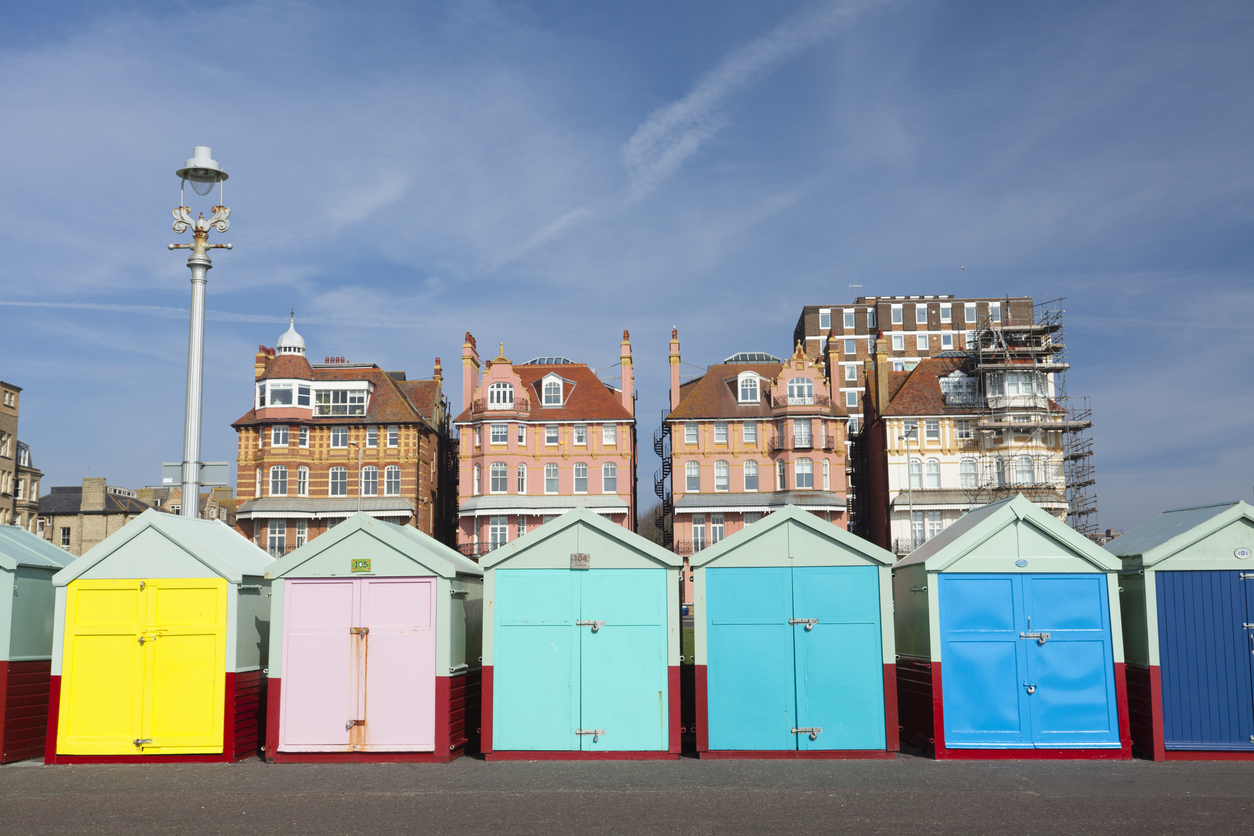Nothing sums up the British seaside more than the beach hut. Candy-striped or solid colours, usually no more than 10 square feet, they line the coast from Cornwall to Kent, stretching as far as Yorkshire and Berwickshire.
Elaborate or simple, available to rent or buy, these are not only suitable for an enjoyable day trip to the beach, but some huts even offer the possibility of staying overnight. In recent years their popularity has soared, with long waiting lists and buyers outbidding each other at auctions, anxious to get their hands on their own beach hut. What is it about beach huts? Are they more than just a place to store your bucket and spade and to make yourself a cup of tea? Despite the wind-swept locations and unpredictable nature of the English weather, beach huts allow you to own a ‘small house’ by the sea where you can sit back and enjoy the sea with a few home comforts. So, where did the beach hut come from, where are some of the best places to see them and, most importantly, how do you get one?









